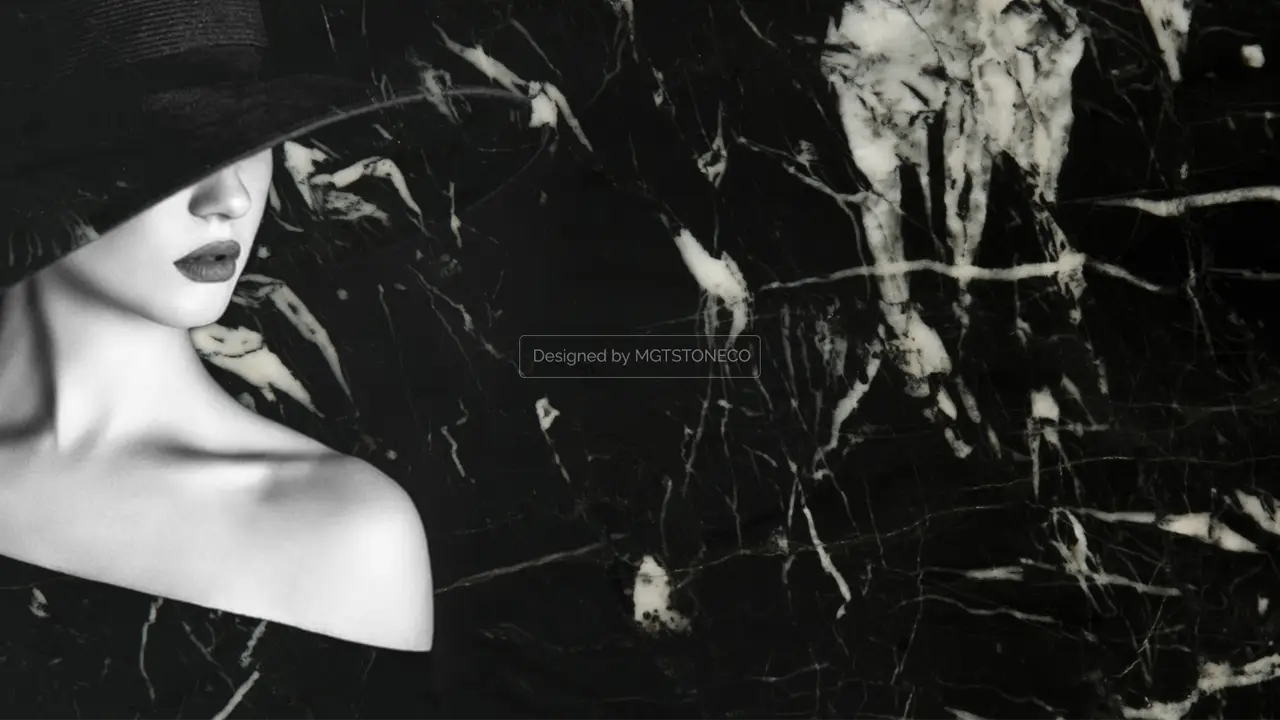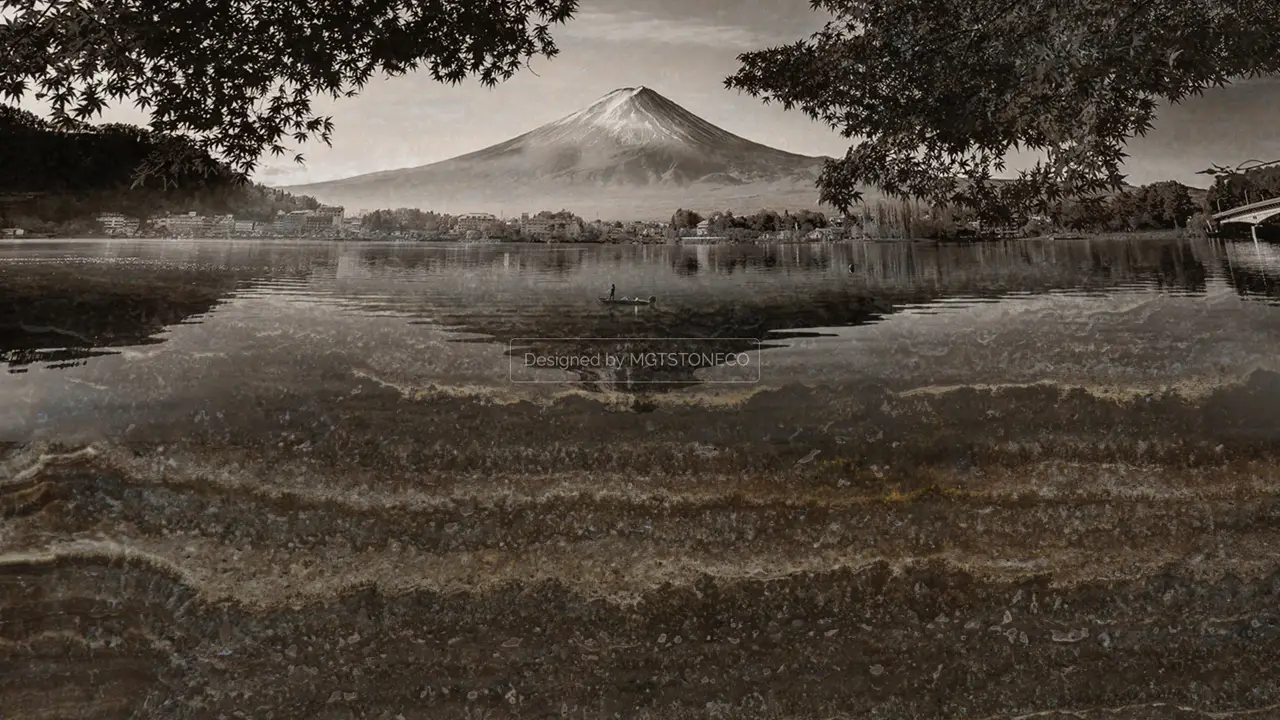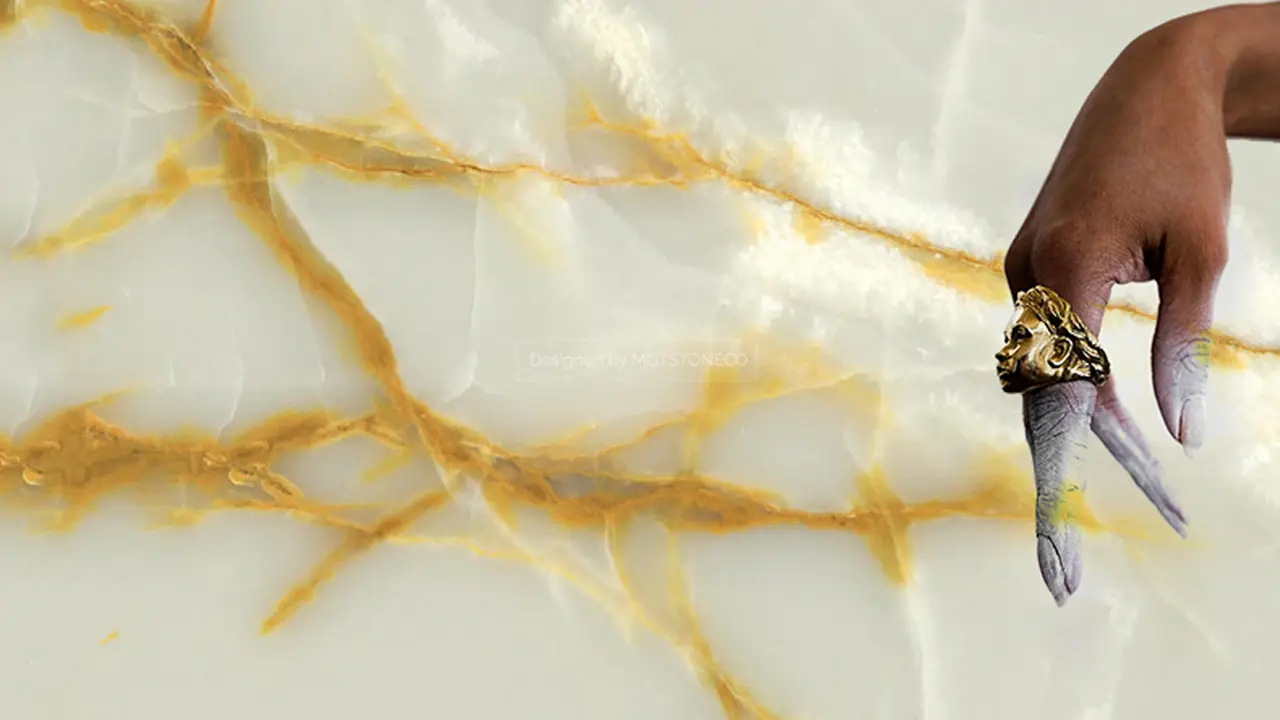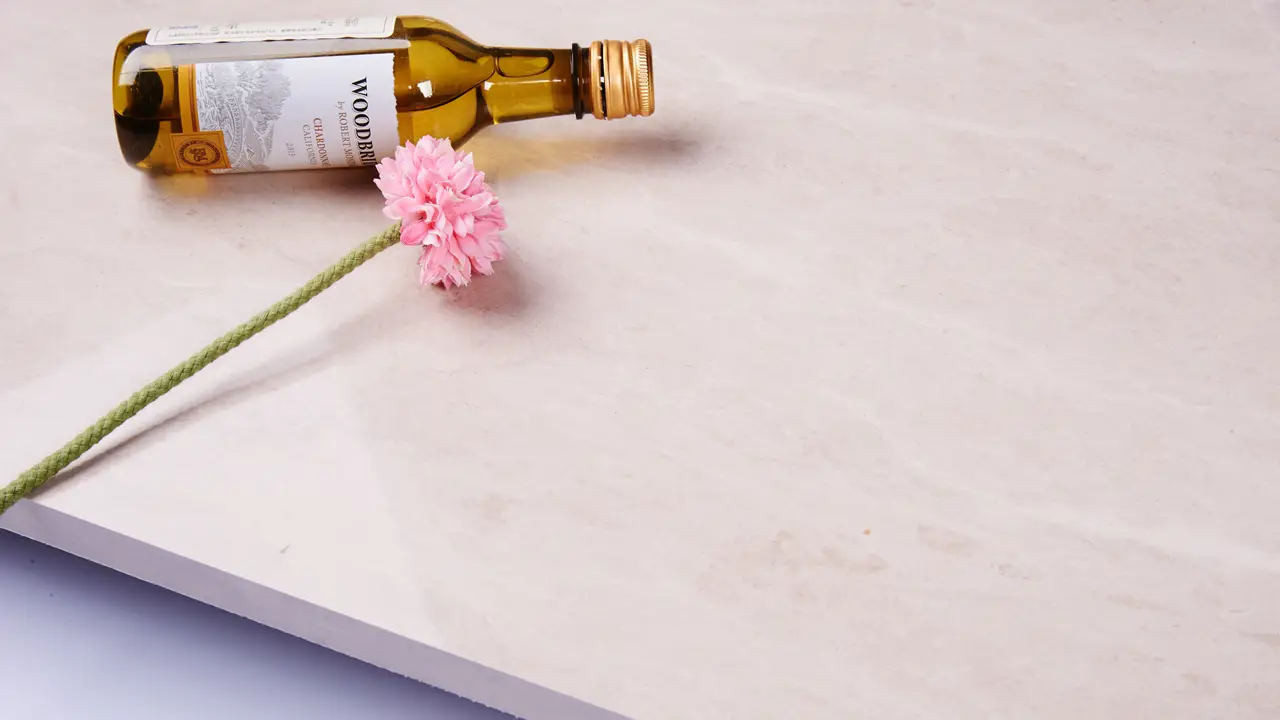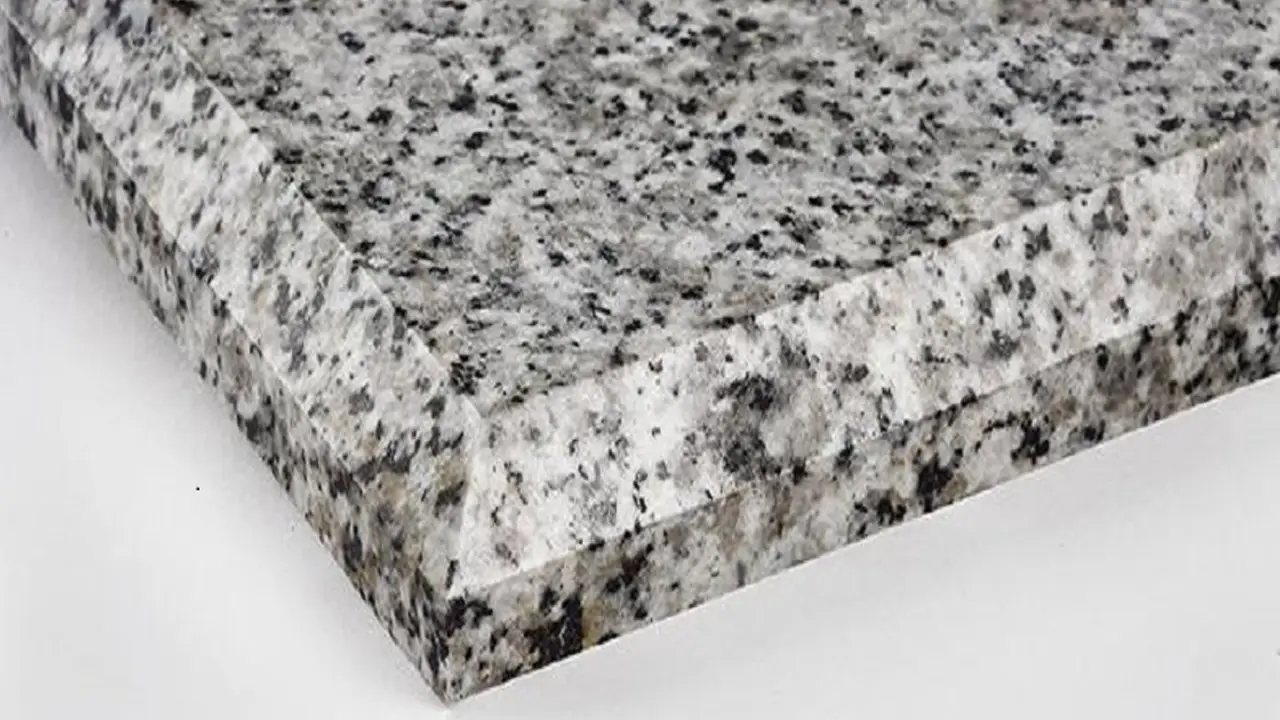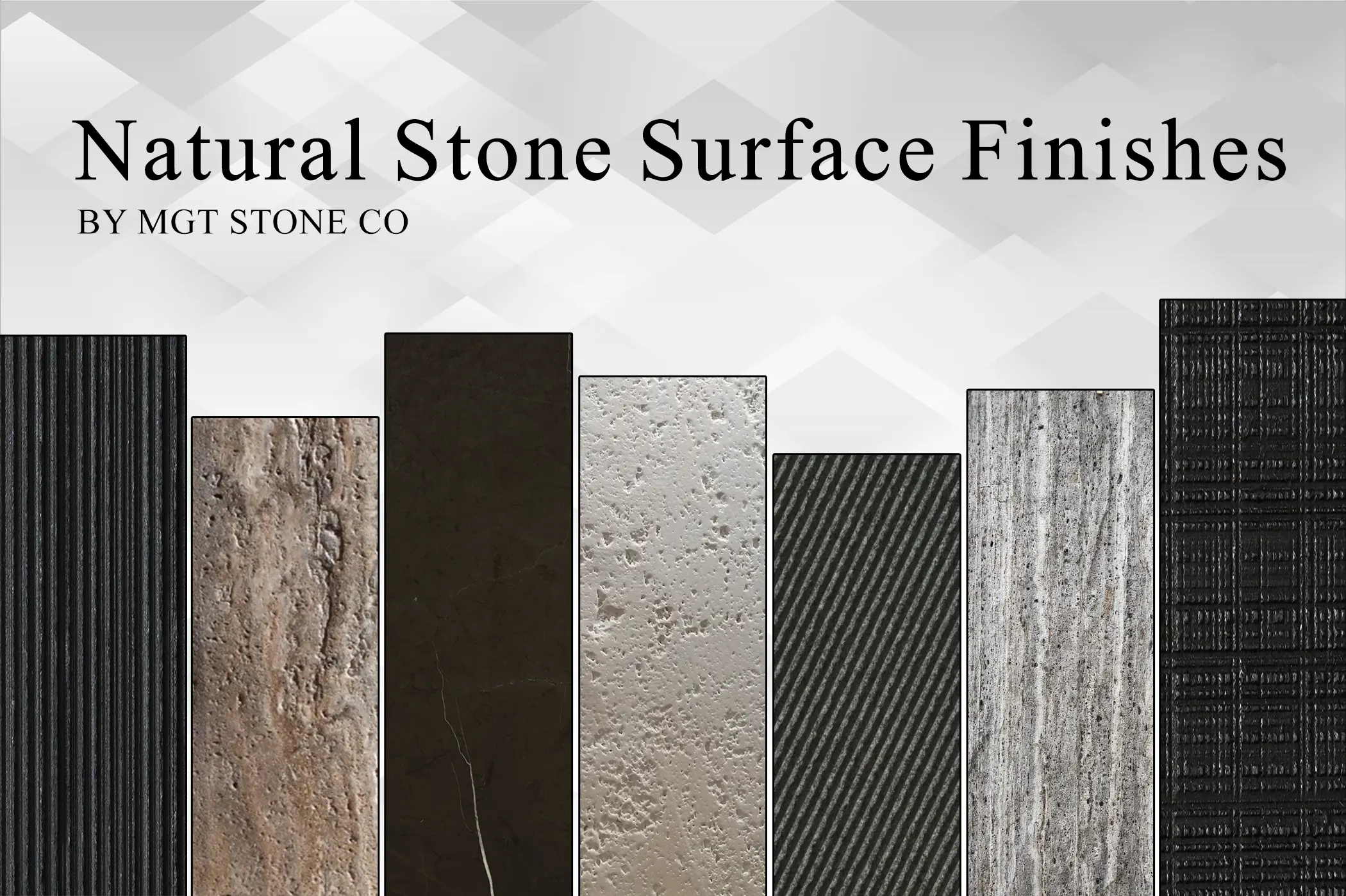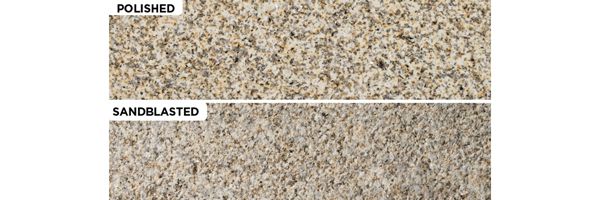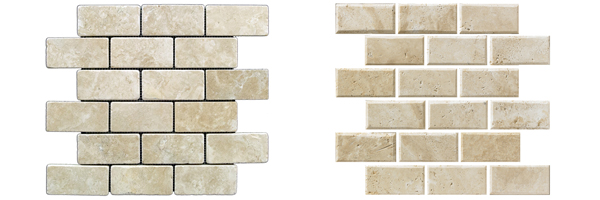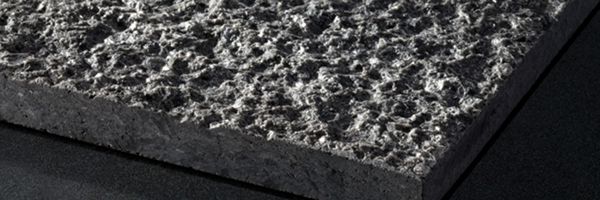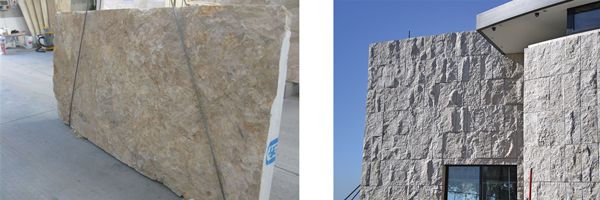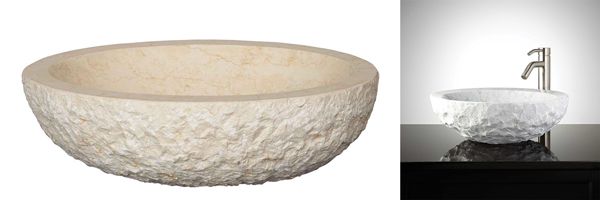Introduction to Stone Surface Finishes
Discover the Art of Stone Finishes: Elevate Your Design with Perfect Textures
A natural stone surface finish refers to the treatment or process applied to the surface of natural stone to achieve a particular texture, appearance, and functional property. These finishes are used to enhance the aesthetic appeal, durability, and slip resistance of the stone for various applications, including flooring, countertops, wall cladding, and outdoor paving.
MGT Stone Co., a professional and experienced stone manufacturer, offers a comprehensive range of stone finishes for slabs and tiles, helping you achieve the aesthetic appeal you desire.
Here are the main types of natural stone surface finishes:
1. Polished:
A polished surface is brilliant and shiny with a mirror-like effect, resulting in the most refined edge for tiles. The polishing process involves the repeated application of abrasive treatments. This type of finish is suitable for nearly all types of stones and is especially common in Iranian stone factories. Polished tiles are ideal for interiors, bench tops and countertops, but are not recommended for outdoor use due to reduced slip resistance. The polished finish is the most popular choice for marble stone.
2. Honed
Honed finishing is the most common process for limestone, many varieties of which do not accept a polish. A honed finish refers to a smooth surface with a dull or slightly reflective appearance, less glossy than a polished finish. In high-traffic areas, floor tiles are often honed rather than polished.
3. Leathered
Achieved by applying diamond-tipped brushes to a stone surface, a leathered finish is a type of treatment designed to create a soft, textured appearance that resembles leather. This method is typically used for stones with natural holes, such as travertine, certain marbles, and some granites. During the leathering process, the edges of these holes are refined to achieve a smooth look, enhancing the stone’s tactile quality. The term “leathered” is derived from the Persian word چرمی (pronounced Charmi), which evokes the texture of leather.
The leathered finish can be provided in two variations: Polished Leathered and Honed Leathered. The Polished Leathered finish combines the textured feel with a shiny appearance, giving the stone a unique, glossy look while retaining its characteristic undulations. On the other hand, the Honed Leathered finish maintains a matte look, providing a softer, subtler aesthetic. Both types of leathered finishes add a sophisticated, timeless appeal to stone surfaces, making them a popular choice for various architectural and design applications.
4- Sandblasted
A sandblasted finish is achieved by blasting the stone surface with high-pressure sand, resulting in a rough, matte texture. This finish is particularly useful for exterior cladding, walkways, and other applications where a non-slip surface is crucial. The sandblasting process removes saw marks and creates a smooth surface adorned with fine, sometimes nearly invisible circular marks, giving the stone a slightly scratched appearance. Despite this, the texture feels pleasant to the touch.
The colors of sandblasted stone tend to be a bit dull compared to other finishes. This type of finish is commonly applied to sandstone and is an excellent choice for exterior applications. Known for its durability and slip-resistant properties, the sandblasted finish ensures both functionality and aesthetic appeal. Additionally, this finish is sometimes referred to as a grit blasted finish, providing the same benefits and visual characteristics.
5- Tumbled
Tumbled stones are created by placing them in a drum with abrasives, sand, pebbles, and water, which gently wears down their edges and surfaces, resulting in an aged, weathered appearance. This finish is often used for tiles, pavers, and decorative elements, giving the impression that the stones have been used for centuries. The tumbling process, similar to achieving an antique finish, imparts a unique, rustic charm to a variety of stones, making them ideal for both interior and exterior design applications.
6- Flamed
A flamed finish is created by exposing the stone surface to high-temperature flames, causing the surface to burst and become rough. This finish is particularly suitable for exterior applications like walkways and pool surrounds due to its excellent slip-resistant properties. The process involves directing a high-temperature flame at the stone, causing thermal shock that blows the crystals out, especially in granite stones composed of minerals with varying degrees of expansion. The resulting surface is rough, non-slip, and generally faded in color, effectively concealing defects and tone variations. Additionally, due to oxidation, yellow materials may turn orange or red, adding a unique aesthetic appeal to the stone.
7- Brushed
By brushing with abrasive brushes under high pressure, the original surface—whether honed, sandblasted, flamed, or sanded—becomes smoother. This treatment enhances the colors of the natural stone, making them more vivid. The resulting surface retains a slightly rough texture, depending on the initial finish.
8- Bush-Hammered
A bush hammered finish is achieved by mechanically hammering the stone surface to create a pitted, textured look. This process involves using a mechanical hammer that hits the stone, leaving small indentations on the surface. The texture and appearance of the finish depend on the size of the hammer and the number of points it has. This finish is ideal for both interior and exterior applications, particularly for external uses such as paving or walkways, where a non-slip surface is essential.
9- Split Face
A split face finish is created by mechanically splitting the stone with a guillotine, which fractures the surface to reveal a rough, rocky texture. This method exposes the stone’s natural, rugged surface, giving it an authentic and rustic appearance. Split face finishes are commonly used for wall cladding and other decorative features, providing a natural, earthy aesthetic that enhances the visual appeal of both interior and exterior spaces.
We also offer split face products. For more information, please check this link.
10- Antiqued
The antiqued finish is achieved through various treatments, such as brushing or acid washing, to give the stone an aged, worn appearance. This finish is ideal for flooring, paving, and areas where a vintage look is desired. For smaller items, this surface can be created using machines that resemble commercial washing machines. For larger items, the process involves flaming the stone and then using abrasives to brush the surface. The antiqued finish not only provides a worn look to the stone but also promotes further aging over time, enhancing its rustic charm.
11- Sawn
A sawn finish is achieved by cutting the stone with diamond disc teeth, resulting in a somewhat rough and irregular surface with small furrows and undulations. This finish lightens the stone and imparts a matte tone, making it perfect for external applications such as paving, steps, pathways, driveways, and patios. The process involves using diamond gang saws, diamond wire saws, or block cutters to saw granite, marble, sandstone, or travertine blocks into slabs. While the sawn surface is generally smooth, it may display subtle blade or saw markings, adding to its natural character and appeal.
12- Chiseled
A chiseled finish, true to its name, is created by breaking the stone with a hammer and chisel. The resulting surface can vary from very rough to slightly irregular, depending on the type of chisel and the skill of the artisan. This versatile finish can be applied to any type of stone, adding a unique, textured appearance.
13- Acid-Washed
An acid-washed stone surface finish is created by applying an acid solution, typically hydrochloric or muriatic acid, to the stone, resulting in a textured, matte appearance that highlights the stone’s natural colors and patterns. This finish provides a slightly rough, non-slip surface, making it ideal for outdoor applications like pool decks, patios, and walkways. It enhances the stone’s natural beauty with a rustic, aged look and is suitable for various types of stone, including limestone, marble, and granite. Regular maintenance, including proper sealing and cleaning, is necessary to preserve the appearance and durability of the finish.
14- Epoxy Treated
Epoxy treated stone undergoes a multi-step process that combines several techniques to enhance its visual and physical properties. First, the stone is honed to create a smooth surface for the resin application. It is then dried in a special oven, followed by another round of resin application and drying. Finally, the stone is polished to achieve a glossy finish. This process significantly improves the stone’s visual appeal and increases its resistance, making the tiles more durable and aesthetically pleasing.
14- Natural
A natural finish involves no additional treatment, presenting the stone as it is extracted from the quarry and cut into the desired format. The final appearance depends entirely on the stone’s inherent characteristics and how it is quarried. This finish is ideal for cladding and irregular and regular cubic stone, showcasing the raw beauty and unique qualities of the stone.
MGT Stone Co: Your Premier Iran Natural Stone Supplier
MGT Stone Co is renowned as the leading supplier of natural stone in Iran, offering a comprehensive range of surface finishes on all related products. Whether you opt for a product from our own quarry list or select from our extensive stone collection in this link, we provide expert consultation to help you choose the perfect stone surface finish to suit your needs and architectural preferences.
Expert Consultation for Your Stone Finishes
At MGT Stone Co, we pride ourselves on our ability to guide you in selecting the right surface finish for your projects. For instance, we can assist you in choosing the ideal surface finish for Marjan Silver Travertine flooring, ensuring durability and aesthetic appeal. Similarly, we can recommend the most fashionable natural stone finish for your Tiffany White Onyx wall cladding, keeping your design trendy and timeless.
Contact Us for More Information
If you need further information or assistance in selecting the perfect stone surface finish, don’t hesitate to contact us. Our knowledgeable team is ready to save you time and ensure that your project achieves the desired look and functionality. Let MGT Stone Co be your trusted partner in creating beautiful, lasting stone installations.

